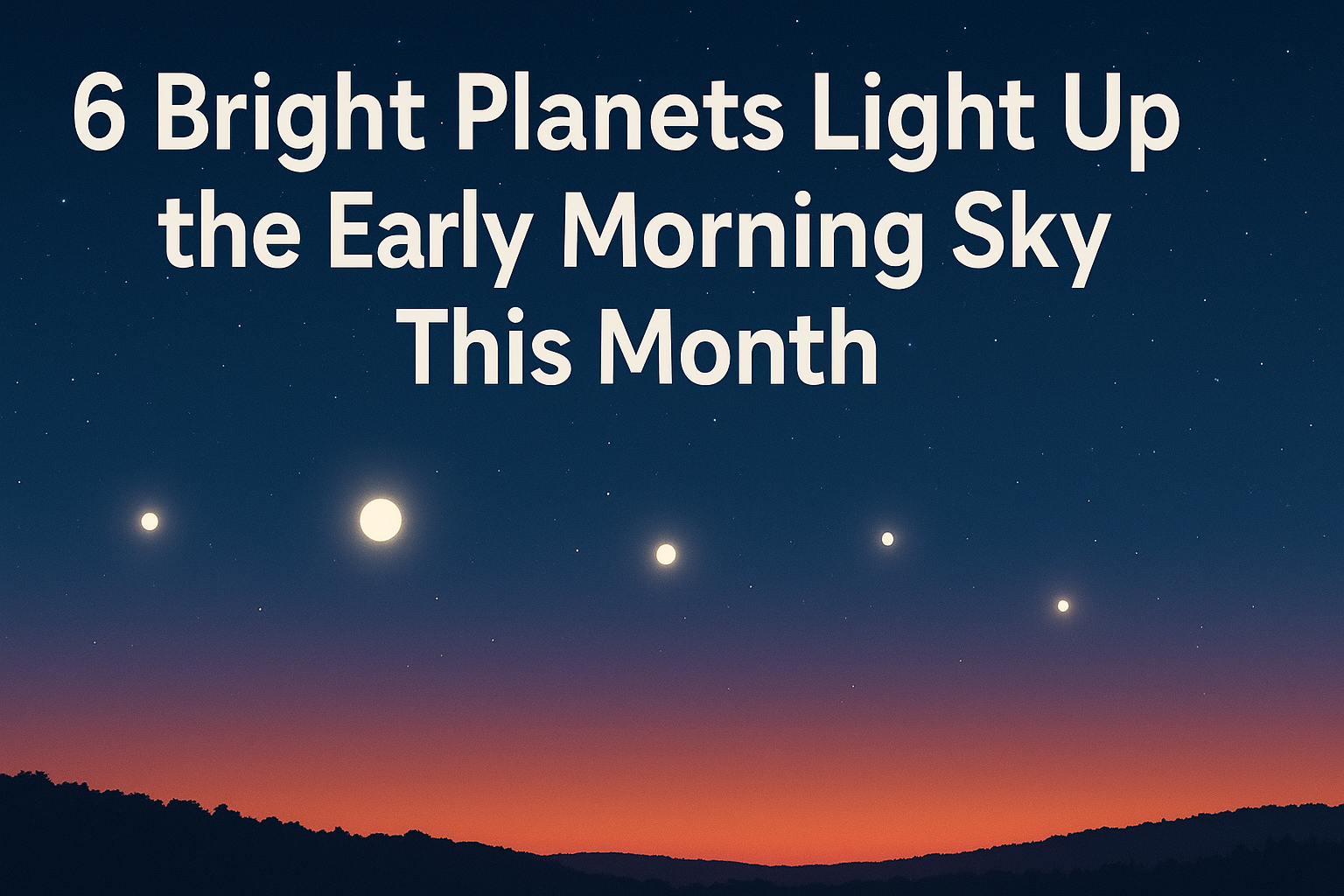Astronomy enthusiasts and early risers are in for a treat as 6 Bright Planets Light Up the Early Morning Sky This Month in a dazzling planetary parade. This rare alignment brings together some of the most captivating worlds in our solar system, visible right before sunrise. If you’ve ever dreamed of seeing multiple planets in a single glance, now is your chance.
What Is a Planetary Parade?
A planetary parade occurs when several planets appear to align in the night or early morning sky, creating a spectacular visual effect. While the planets aren’t actually lined up in space, their positions from Earth’s perspective give the illusion of a cosmic formation. Events like this can happen once or twice a year, but the fact that 6 Bright Planets Light Up the Early Morning Sky This Month makes it especially remarkable.
NASA notes that at least one bright planet is visible most nights, but it’s rare to see this many at once. Earlier this year, January skies showcased six planets, and in February, all planets in our solar system were visible—though some required optical aid.
Which Planets Can You See?
The lineup includes:
- Venus – Shining brilliantly and easy to spot without equipment.
- Jupiter – Another bright planet visible to the naked eye.
- Saturn – Slightly dimmer but still visible without aid.
- Mercury – Faint but currently easier to see, especially over the next week.
- Uranus – Requires binoculars or a telescope.
- Neptune – Also needs optical aid for viewing.
The first four planets can be spotted with the naked eye, making it simpler than ever to enjoy the fact that 6 Bright Planets Light Up the Early Morning Sky This Month. Uranus and Neptune, though faint, add to the celestial magic for those with the right tools.
Timing Is Everything
The best viewing opportunities occur in the week ahead. For the clearest view, head outside shortly before sunrise and look toward the eastern horizon.
Jupiter and Venus are currently positioned close together, described by Carolyn Sumners of the Houston Museum of Natural Science as “close together like cat’s eyes.” Mercury, at its farthest point from the Sun on Tuesday morning, will be easier to spot before it slips back into the Sun’s glare. Saturn sits slightly apart, but still within the same viewing arc.
This special arrangement means 6 Bright Planets Light Up the Early Morning Sky This Month in a rare display that won’t repeat until next February.
How to Spot Them
Justin Bartel of the Science Museum of Virginia advises looking for “tiny pinpoints of light” that shine steadily rather than twinkling like stars. Here’s a step-by-step approach:
- Check the weather – Choose a clear, cloudless morning.
- Find a good location – Avoid tall buildings or city lights that could block your view.
- Start with the brightest – Locate Jupiter and Venus first.
- Work outward – Look for Saturn, then Mercury near the horizon.
- Use equipment for the faint ones – Binoculars or a telescope will reveal Uranus and Neptune.
Taking the time to prepare will ensure you don’t miss the magic when 6 Bright Planets Light Up the Early Morning Sky This Month.
A Changing Show
While the current display is stunning, it’s also temporary. Mercury will vanish into the Sun’s glare toward the end of the month. But just as one planet exits, another element enters— a crescent moon will join the lineup, adding a picturesque touch to the planetary scene.
It’s these subtle changes that make each occurrence unique, and why so many astronomers and casual skywatchers alike are excited when 6 Bright Planets Light Up the Early Morning Sky This Month.
Why This Event Matters
Seeing multiple planets together reminds us of the vastness and beauty of our solar system. For many people, catching sight of this alignment can spark a lifelong interest in astronomy. Planetary parades like the one where 6 Bright Planets Light Up the Early Morning Sky This Month also highlight the predictable yet awe-inspiring motions of celestial bodies—movements that humans have been tracking for millennia.
Tips for Photographing the Event
If you want to capture the moment:
- Use a tripod to keep your camera steady.
- Try longer exposure times to bring out faint details.
- Frame your shot to include the horizon or landscape for perspective.
- Experiment with different settings to highlight that 6 Bright Planets Light Up the Early Morning Sky This Month in your own style.
Smartphone cameras can work surprisingly well, especially if paired with a tripod or stabilizer.
Looking Ahead
This is the last planetary parade of the year, but the next big alignment is set for February. That makes now your only opportunity to witness how 6 Bright Planets Light Up the Early Morning Sky This Month in such a concentrated and brilliant arrangement.
As each planet continues its journey along its orbit, the sky changes nightly. Observing over several mornings can reveal the subtle shifts in position, almost like watching a slow cosmic dance.
Final Thoughts
The fact that 6 Bright Planets Light Up the Early Morning Sky This Month should be reason enough to set an early alarm and step outside. Whether you’re an experienced stargazer or a curious first-timer, this celestial parade offers a sense of wonder that’s hard to match.
From the dazzling brightness of Venus to the delicate presence of Mercury, and the elusive glimmers of Uranus and Neptune, this alignment is a reminder that the universe is always in motion, offering us moments of beauty if we take the time to look up.
So, grab a warm drink, find a good vantage point, and see for yourself how 6 Bright Planets Light Up the Early Morning Sky This Month in a cosmic show you won’t soon forget.
